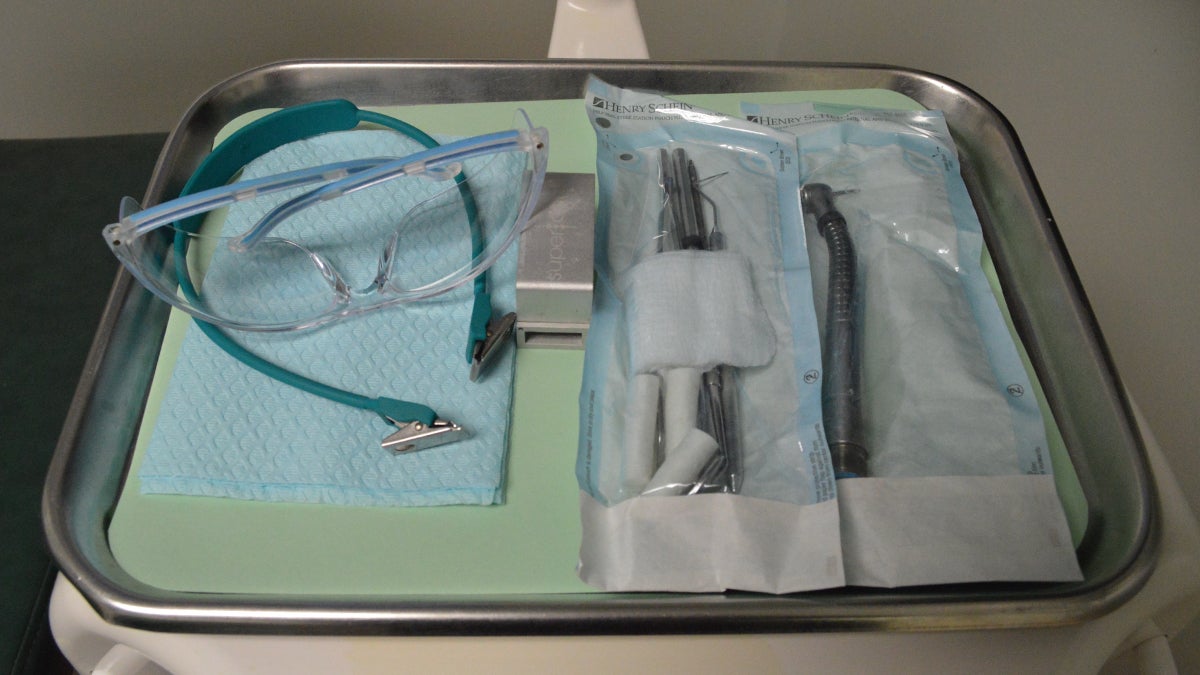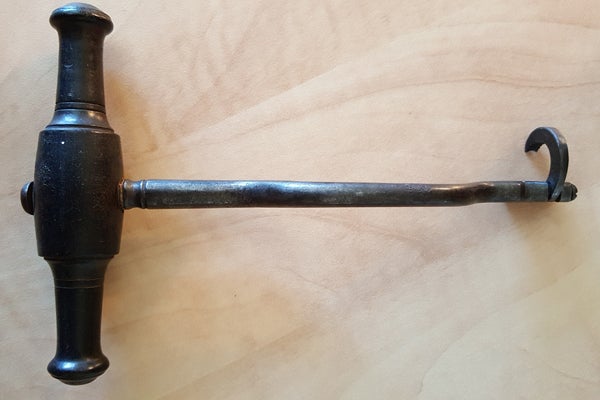7 weird things that might change the way you think about that cavity

(Paige Pfleger/WHYY)
What do maggots and George Washington have in common?
It was hard to fit everything we learned about dentistry into The Pulse’s recent segment on dental care, so below are seven gems we couldn’t stop thinking about.
1. Why are toothaches so horrible?
Pre-20th century answer: Because there are maggots or worms in your teeth.
The worm theory goes back thousands of years to ancient Mesopotania. As far back as Hippocrates’ time, it was thought that the body was made up of four components or humors: black bile, yellow bile, blood and phlegm. A person’s health, and even personality, resulted from the delicate internal balance of these fluids. Teeth, though, didn’t really fit into this. “They seemed to be inert, almost dead,” explains NYU School of Dentistry’s Dr. Andrew Spielman. Teeth also gained a special status. They were an anomaly. “The pain was so dreadful, that there were almost magic powers associated with it.” Hence, it was thought, even by some up through the 19th century, that the horrible pain from toothaches stemmed from maggots or worms residing in those decaying teeth.
2. No really, why are toothaches so horrible?
21st century answer: Because there’s no room for a nerve to expand when it’s inflamed in the tooth.
When inflamed blood vessels expand, they hit the inner wall of the the tooth. It’s rigid, and that compresses the nerve, thus making dental pain “almost unbearable compared to any other pain in soft tissue, which is usually not as compressing,” according to Spielman. “Teeth have a very unique anatomical structure in the root canal.” Scientists started shifting away from that worm theory in the 1700s. “The actual cause of caries was not revealed until the late 1890s when Willoughby Miller developed the acid dissolution and germ theory,” Spielman adds.
3. Paul Revere was a dentist.
Whaaa? Also this, from the American Dental Association:
“He placed advertisements in a Boston newspaper offering his services as a dentist. In 1776, in the first known case of post-mortem dental forensics, Revere verifies the death of his friend, Dr. Joseph Warren in the Battle of Breed’s Hill, when he identifies the bridge that he constructed for Warren.”
4. On 21st century dental care: the term maximum may not mean what you think it means.
In health insurance lingo, “maximum” typically refers to the out of pocket maximum. That’s the capped amount a person pays for care in any given year. The idea is once you hit that amount, insurance picks up the rest. Dental coverage works in reverse. For non HMO plans, the “maximum” generally refers to capped amount of money a dental plan would pay toward a person’s care in any given year, leaving an individual on the hook to pay for the rest. In that way, even the ADA does not view dental coverage as insurance. Rather, the group defines it as a “benefit.”
The average annual dental maximums are somewhere around $1,000 to $1,500. That marks an “incremental” change from when maximums and dental plans first surfaced in the 70s, says the American Association of Dental Plans’ Evelyn Ireland, who attributes that to employer decisions and her tradegroup findings that most people don’t max out their benefits. About five percent of plans have a maximum of over $2,500. The outlier appears to be the federal employee program, which Ireland says includes a $10,000 maximum for dental care.
5. Also, a lot of dental plans have waiting periods.
Many dental plans include waiting periods, anywhere from six to 18 months, before they’ll cover any portion of the cost of major care. That can come as a surprise to someone who is in need of dental work and purchases individual coverage, says longtime office manager Claire Sparano. People “are thrilled” they finally have coverage, she says, only to learn “they couldn’t have the work done because there was a waiting period.” For that reason, Sparano advises anyone considering signing up for a plan to check on the length of its waiting period. From the industry’s standpoint, waiting periods are a common way to prevent people from buying coverage only when they need high cost care, explains Ireland with ADAP. “There are plan design provisions in place like waiting periods, so someone has coverage long enough to build up reserves to pay for costs of care,” she says.
6. Back to history…George Washington’s dentures were insane.
A warning: you might never look at the dollar bill the same after this.
[]
America’s leading Revolutionary War general and founding President had major mouth problems. He even had his own cadre of dentists. By today’s standards, his dentures were pretty crazy contraptions, sculpted out of hippopotamus bone, containing real human teeth and utilizing screws and springs to keep them together and pressed up against his mouth.
Washington had ones that were lead based, too. “It was made heavy to keep it in the mouth, so it would not fall out,” said Spielman. By heavy, he means three pounds! “George Washington was so self conscious of losing these dentures,” Spielman posits, “that his second inaugural speech lasted 30 seconds.”
Oh, and by the way: according to the Mount Vernon estate, Washington’s dental troubles “helped to mislead the British Army in 1781.” This was kind of sort of a rather significant moment in American history.
7. I am so glad dentists no longer use this:

(Courtesy of Burton Edelstein)
It’s called a dental key. It was used to extract teeth from the 1700s up through the 20th century.
Finally, one parting reflection from Dr. Spielman, on the notorious dental drill and knife. He predicts that based on the current research being done, the future of dentistry will involve a much less invasive approach:
“Currently, we drill and fill and cut. It’s the only health profession that treats infection, such as caries and periodontal disease, with a knife or a bur [a drill]. Every other health profession treats it medically, non invasively,” he says. “That’s going to happen to dentistry. We will see a shift away from interventional dentistry to preventive and non invasive dentistry…It’s an exciting time to be a dentist.”
On behalf of all of humanity, bless your heart, Spielman. We hope you’re right.
WHYY is your source for fact-based, in-depth journalism and information. As a nonprofit organization, we rely on financial support from readers like you. Please give today.



